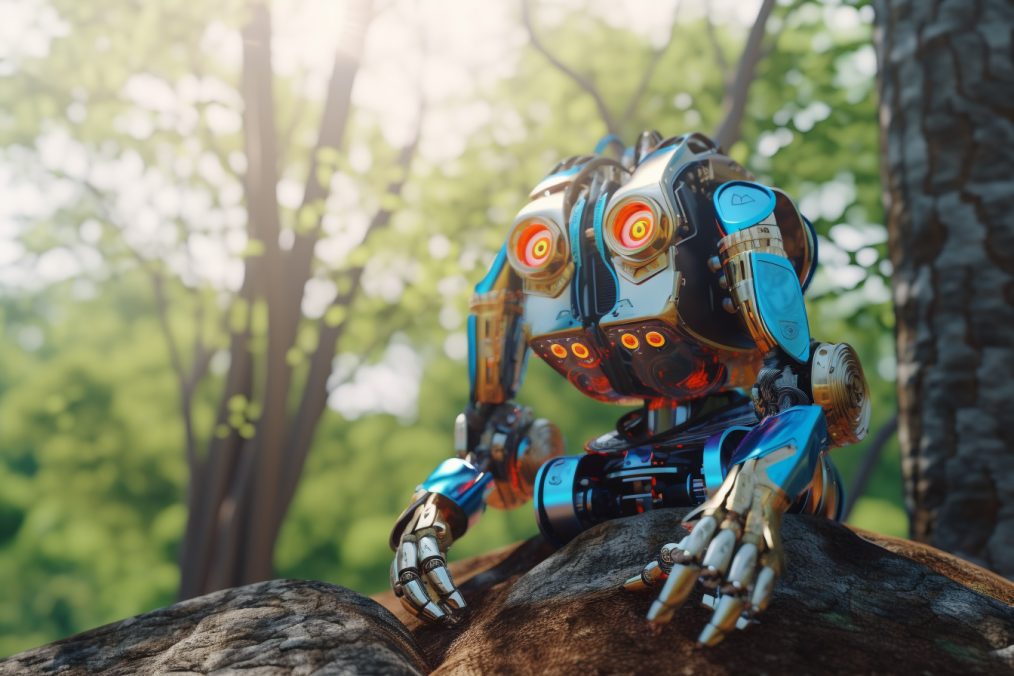Have you ever wondered what would happen if artificial intelligence (AI) could write poetry? Introducing Bard, Google’s new experiment with AI that aims to shed light on the fascinating world of artificial creativity. In this blog post, we will explore the workings of this groundbreaking technological endeavor and understand its impact on the intersections between literature, art, and AI. Join us as we take a closer look at the roles machine learning algorithms and AI can potentially play in redefining the boundaries of creativity and human expression.
The Concept Behind Bard: AI Meets Poetry
The idea of Bard stems from Google’s Research Brain team’s interest in training AI to tackle new and unexplored artistic challenges. The goal of the project is to understand if AI can generate poetry that follows specific rules and guidelines of poetry writing, but is also aesthetically pleasing to readers.
The AI model, Bard, is a generative model specifically designed to create poems by using various techniques such as language modeling, transfer learning, and deep learning. It attempts to answer a critical question: Can AI produce meaningful content similar to that produced by human poets with creative intent?

Google is introducing a revolutionary new experiment, called ‘Bard’, into the world of artificial intelligence (AI). Developed by the Google Research division, this new technology utilizes natural language processing to develop long-form and meaningful stories. After it is provided with a few sentences as input, Bard takes over and creates its own narrative using AI to stitch together the story. The team behind Bard was motivated by the goal of increasing people’s interest and knowledge in computers with an easy-to-use story generation tool – an approach that could transform how people interact with technology and make complicated concepts easier to understand. In addition to offering a unique form of entertainment, researchers are confident that Bard has many other potential applications.
The Development and Training of Bard
Bard was created by training the model on a dataset comprising more than 30 thousand poems spanning different poetic styles, forms, and genres. This dataset was a representative collection of human-authored poems to expose the AI model to diverse linguistic and stylistic characteristics of written poetry.
Once the model was exposed to the dataset, it underwent various stages of fine-tuning to ensure it could compose new poems within specific constraints and styles while abiding by the aesthetics and conventions of poetry. Google’s experts guided the model through the process, closely reviewing its outputs and refining it over a series of iterations to improve its capabilities.
The Achievements and Potential of Bard
One of the most remarkable achievements of Bard is the ability to comprehend the rules and nuances of different poetic forms, such as sonnets and haikus. Beyond understanding the structure, the AI model has also demonstrated the capability of crafting evocative imagery and metaphors.
As an experimental project, Bard also aims at exploring how AI can collaborate with human creators. It can potentially serve as a creative assistant, offering suggestions, variations, or entirely new lines to augment the human poet’s work.
Google’s new experiment with AI, called Bard, seeks to revolutionize the way we interact with technology. Through the use of natural language processing, the company hopes to blur the line between humans and machines so that communication is more efficient and natural. By creating an AI that can interpret and respond to conversations like a human being, Google aims to make interactions with technology easier and more intuitive. Based on its user feedback, this new endeavor has already seen great success. If successful in full implementation, Bard could very well be the next step in digital evolution.
The Challenges and Limitations
Despite its impressive accomplishments, Bard also faces several challenges and limitations. For example, the AI-generated poems might not always have a coherent emotional tone or convey a consistent message. Additionally, Bard might inadvertently generate lines that already exist in some form, raising questions of originality.
In its current form, Bard cannot attribute conscious intent or purpose to its outputs, mainly because understanding the meaning of a poem requires understanding the underlying emotions, experiences, and societal contexts that shape the poem. While AI advancements continue, this limitation sets a clear distinction between human and artificial creativity.
The Future of AI-generated Poetry
Bard represents a milestone in the journey to explore the capabilities of AI-generated art and literature. As machine learning techniques and AI technology evolve, more sophisticated models that generate various literary forms with improved coherence, originality, and creativity can be expected.
However, the question of whether AI-generated literature will ever surpass or equal human literature remains open. The potential uses of these advancements will depend on the collaboration between machines and human creators, blending the unique strengths of both parties to redefine the boundaries of expression and art.
Conclusion:
As we take a closer look at Google’s AI-generated poetry experiment, Bard, there are crucial lessons to be learned about the intersections between technology, art, and human expression. While the experiment showcases the tremendous potential of AI in generating a wide array of artistic forms, it also reminds us of the value of our unique human experiences and insights. The future will undoubtedly bring about a more profound collaboration between human creators and AI, as we redefine the limits of what is possible in the world of art and literature.









